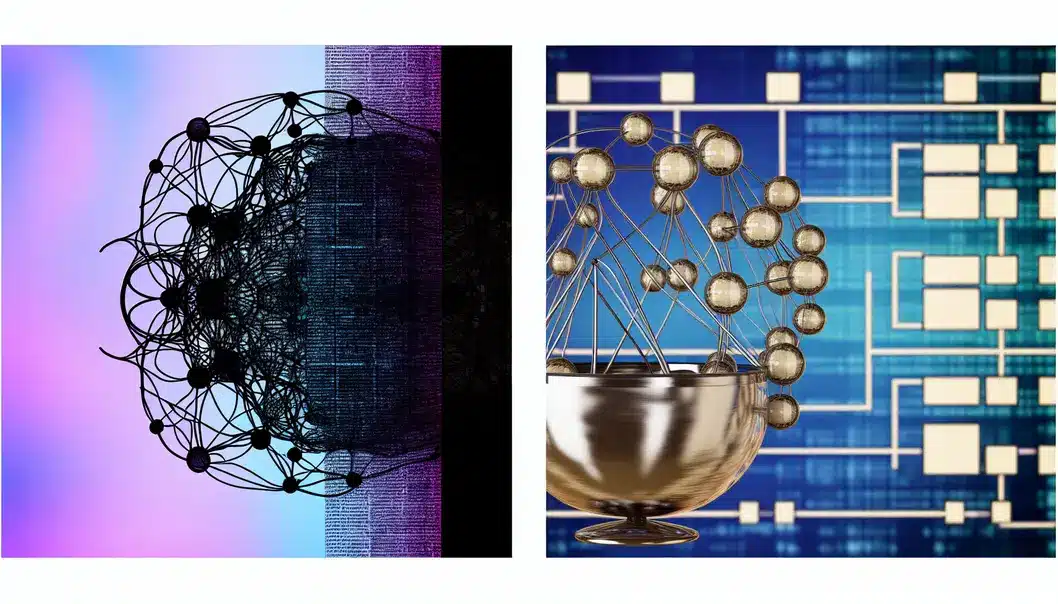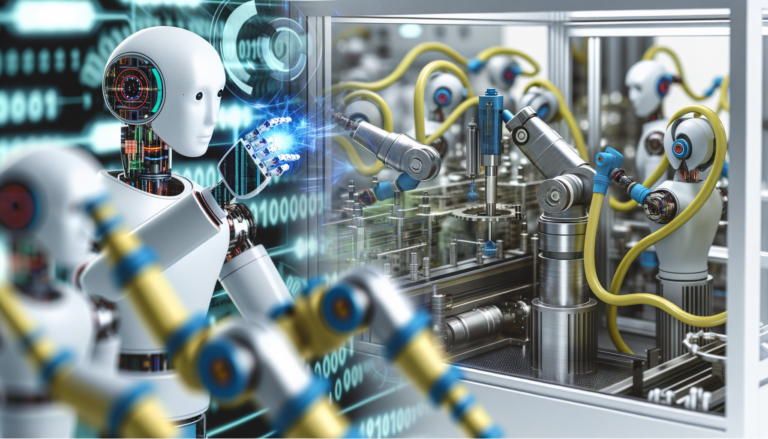IntroductionIn the evolving field of natural language processing (NLP), two methodologies—Retrieval-Augmented Generation (RAG) and fine-tuning—stand out for their unique capabilities. Understanding these approaches is crucial for developers and experts seeking to design intelligent systems that balance performance, flexibility, and resource efficiency. This article delves into the comparative aspects of RAG and fine-tuning, exploring their performance dynamics, adaptability, and practical application scenarios. Readers will gain a comprehensive understanding of how these strategies can be optimized for different use cases.
Contents of Table
Chapter 1: Performance and Operational Comparison between RAG and Fine Tuning in ML Models
- Evaluating the Technological Foundations of RAG and Fine Tuning in ML Models
- Navigating the Economic and Efficiency Dynamics of RAG Versus Fine-Tuning in ML Models
Performance and Operational Comparison between RAG and Fine Tuning in ML Models

1. Evaluating the Technological Foundations of RAG and Fine Tuning in ML Models
In the rapidly evolving landscape of machine learning, understanding the technological distinctions between Retrieval-Augmented Generation (RAG) and fine-tuning is vital for leveraging these methodologies effectively. Both strategies enhance the capabilities of large language models, yet they do so through markedly different mechanisms.
Retrieval-Augmented Generation (RAG) offers a distinct approach by integrating external data sources to enhance model performance. Developed by Meta, RAG is designed to pull in real-time information from a curated knowledge base, allowing it to address dynamic and ever-changing data requirements without necessitating retraining. This is enabled through a three-step process: constructing a knowledge base, embedding and retrieving information through vector representations, and enriching the model’s context with the retrieved knowledge.
Technologically, RAG’s strength lies in its flexibility. It decouples the need for constant retraining from accessing new information, enabling models to adapt quickly to new data inputs as they arise. However, this dependence on the quality and relevance of external databases introduces challenges, as the efficacy of the model is only as good as the data it can retrieve. This makes the careful curation and updating of the external data sources critical to the system’s success.
Conversely, fine-tuning takes a more traditional approach by adjusting a pre-trained model’s internal parameters with a specialized dataset. This method embeds domain-specific knowledge directly within the model, enabling nuanced understanding of specific terminologies and patterns that are unique to a particular field of application. Fine-tuning offers deep customization and stability within its trained domain, empowering the model to achieve high accuracy for tasks that remain relatively constant over time.
The technological demands of fine-tuning are significant, particularly in terms of computational resources. The process requires substantial time and energy, especially when dealing with large-scale pre-trained models. Recent advancements have begun to mitigate some of these challenges, yet the need for computational efficiency remains a key consideration.
When comparing RAG and fine-tuning operationally, the adaptability of RAG shines in applications requiring access to the latest information, whereas fine-tuning excels in conditions where rigorous domain-specific expertise is crucial. Each has its role defined not just by operational efficiency but by the technological frameworks that support them. Exploring different model protocols can provide further insights into how these approaches can be integrated effectively according to specific use cases. Ultimately, understanding and capitalizing on these technological foundations enables practitioners to select the approach—or combination thereof—that best fits their application’s requirements.
2. Navigating the Economic and Efficiency Dynamics of RAG Versus Fine-Tuning in ML Models
When diving into the economic and efficiency dynamics of Retrieval-Augmented Generation (RAG) and fine-tuning approaches for machine learning models, especially large language models (LLMs), several key implications arise. Both techniques offer distinctive cost and operational advantages, shaping their applicability across varied settings and objectives.
RAG’s primary advantage lies in its ability to harness external data sources without modifying the model’s parameters, a feature that makes it especially relevant for tasks requiring contemporaneous knowledge. By employing vector databases and semantic search mechanisms, RAG is adept at producing timely and contextually nuanced outputs. This intrinsic capability translates to significant long-term cost-effectiveness since the absence of a need for continuous retraining reduces ongoing expenses, despite potentially high initial setup investments.
In contrast, fine-tuning embeds domain-specific information by adjusting the model’s existing parameters. This method can exceptionally tailor a model to fit niche applications, enhancing performance by internalizing particularities of language and context directly within the model. However, the computational resources and infrastructure required for fine-tuning are substantial, often making this approach more costly in environments demanding frequent updates. The emergence of parameter-efficient training techniques may mitigate some of these expenses, yet the overarching financial commitment remains a consideration.
Resource utilization further underscores their operational divergences. RAG excels in scenarios where limited computational resources are available, as its operational model primarily revolves around data retrieval rather than intensive computational adjustments. Fine-tuning demands significant hardware and storage infrastructure, elevating its operational costs and, by extension, the environmental impact associated with energy consumption.
From an efficiency perspective, RAG’s adaptability is notable. The ability to integrate new information dynamically without necessitating retrials positions it as an advantageous option in rapidly changing data environments. In contrast, fine-tuning’s strength is its customization capability; yet, frequent data shifts necessitate retraining, possibly leading to inefficiencies regarding time and cost.
Ultimately, the decision between RAG and fine-tuning hinges on an organization’s specific needs, including the requirement for real-time updates and resource availability. A hybrid approach, combining the real-time data accessibility of RAG with the fine-grained adaptation of fine-tuning, could offer a balanced solution for many applications. For deeper insights into how RAG operates within these contexts, you can explore this exploration of RAG’s strategic roles.
Final thoughts
In summary, choosing between RAG and fine-tuning hinges on specific project needs such as real-time data requirements and resource considerations. While RAG excels in flexibility and real-time data, fine-tuning remains a strong choice in stable, controlled environments. Leveraging their combined strengths often yields superior performance, positioning your NLP projects for future advancements.
Ready to elevate your business with cutting-edge automation? Contact AI Automation Pro Agency today and let our expert team guide you to streamlined success with n8n and AI-driven solutions!
About us
AI Automation Pro Agency is a forward-thinking consulting firm specializing in n8n workflow automation and AI-driven solutions. Our team of experts is dedicated to empowering businesses by streamlining processes, reducing operational inefficiencies, and accelerating digital transformation. By leveraging the flexibility of the open-source n8n platform alongside advanced AI technologies, we deliver tailored strategies that drive innovation and unlock new growth opportunities. Whether you’re looking to automate routine tasks or integrate complex systems, AI Automation Pro Agency provides the expert guidance you need to stay ahead in today’s rapidly evolving digital landscape.


